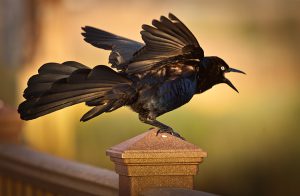
Travel
A Saskatchewan road trip in search of whooping cranes
In the mid-20th century, the elusive birds numbered in the dozens. Thanks to decades of conservation efforts, they appear to be making a comeback.
- 1444 words
- 6 minutes
Travel
“Star man” Stan Shadick showcases earthly attractions

Perhaps in a province known for its living skies, it’s appropriate that a retired astronomer — Stan Shadick — is highlighting some of Saskatchewan’s most elusive wildlife experiences. This past spring Shadick, holder of the record on e-Bird (an online database of citizen bird sightings) for most Saskatchewan bird species seen, offered nature enthusiasts the chance to watch dancing sharp-tailed grouse, Saskatchewan’s provincial bird, and year-round he’s leading nature lovers to rare bird sights.
Shadick grew up loving birds, picking up birdwatching at six years old. But in his teens he had to choose a career. Would it be ornithology or astronomy? “I had a huge number of questions I wanted to learn about the universe,” he remembers. And so Shadwick studied astronomy and physics before launching a four-decade teaching career at University of Saskatchewan, developing much of their astronomy program for undergrads.

Astronomy and birding (listening and watching birds) both rely on good observation skills. “You notice one power pole seems a little taller than the other and that’s because a hawk or raptor is perched on the pole, or you see something darker in a group of trees and you realize it’s a bird sitting in the tree. It’s similar to when I was reviewing star photographs on the computer screen maps.”
Now retired from professional skygazing, Shadick is offering his services as a guide to Saskatchewan’s bird diversity. “Having lived here all my life I know where the best birding habitats are for particular birds of interest,” he says. He knows where you’re likely to find a Sprague’s pipit, a yellow rail, or a whooping crane. He knows when and where the dance of the sharp-tailed grouse will happen. Birders share a lot of information on e-Bird, but they can’t find everything on e-Bird. As an example, Shadick notes that birders know where the whooping cranes were last year, but that’s not necessarily where they are going to be next year. “What I find is that whooping cranes come to a particular spot for a few years in a row and then all of sudden, next year they show up in a new spot.”

Shadick is using his bird guide services to support wildlife in crisis, donating his fees to Living Sky Wildlife Rehabilitation, an organization founded by his wife Jan a decade ago. The organization rescues approximately 2,000 birds and 200 small mammals each year although last winter was extremely busy when a curling rink renovation in Unity, Saskatchewan displaced several hundred big brown bats. Volunteers spent hundreds of hours feeding underweight bats 20-30 mealworms each day in the largest bat rescue and rehabilitation in North America.
Shadick helps by offering additional bird experiences and raising additional funds — this spring he added tours with a better view of sharp-tailed grouse dancing on a lek and offered new workshops to help birders identify birds by ear. “If you learn to identify birds by song you can probably identify about ten times as many birds by voice as by sight. It’s a great tool for increasing the number of birds you can locate,” Shadick says.
Stan Shadick-led tours to watch for:

This sunrise mating display of communal dancing is practiced by only two prairie grouse species (the almost extirpated Greater Sage Grouse is the other) and hard to find. Shadick guides his clients to a sharp-tailed grouse lek before astronomical darkness ends, taping over car lights to avoid disturbing the birds. The duck-size birds can be heard cooing before bursting into frantic tail-shaking and spinning as day breaks. Their purple neck sacs inflate and their eyebrows turn marigold-orange, feet stomping frantically as this Clark Kent of prairie chickens transforms into an avian superstar.

One of Canada’s rarest birds, whooping cranes linger in Saskatchewan’s grain fields each fall as they migrate south to Texas, yet the country’s tallest crane is surprisingly hard to spot. Favouring some crops over others, cranes migrate in family groups and small flocks although Shadick has seen over 100 in a single day, a remarkable success given the species was near extinction eight decades ago.

The oldest bird sanctuary in North America, the refuge dates back to Sir John A. Macdonald’s era and is a great place to see grasslands birds and migrating cranes. Rare species like Baird sparrows and Sprague’s pipit can be found here and it’s also an excellent spot for viewing shorebirds. Each fall it boasts the province’s best sandhill crane display, with 100,000 birds returning to the lake’s safety each evening.
Are you passionate about Canadian geography?
You can support Canadian Geographic in 3 ways:

Travel
In the mid-20th century, the elusive birds numbered in the dozens. Thanks to decades of conservation efforts, they appear to be making a comeback.

Travel
Spread your wings with birdwatching’s elite guard in south Texas

People & Culture
The story of how a critically endangered Indigenous language can be saved

Places
“All the mischiefs humans and the universe are capable of inflicting on an ecosystem have conspired to attack the prairies.”